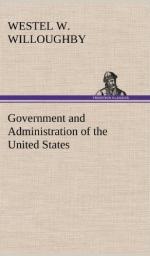_#The Second Continental Congress.#_—On May 10, 1775, assembled the Second Continental Congress, in which all the thirteen colonies were represented. The battle of Lexington had then been fought, and blood had been shed. Though the colonies had as yet no intention of throwing off all connection with England, they were now prepared to resist with arms any invasion of their rights. The work performed by this body has been concisely and forcibly stated by Schouler.[1] He says: “Thus originated that remarkable body known as the Continental Congress, which, with its periodical sessions and frequent changes of membership, bore for fifteen years the symbols of Federal power in America; which, as a single house of deputies acting by Colonies or States, and blending with legislative authority, imperfect executive and judicial functions, raised armies, laid taxes, contracted a common debt, negotiated foreign treaties, made war and peace; which, in the name and with the assumed warrant of the thirteen colonies, declared their independence of Great Britain, and by God’s blessing accomplished it; which, having framed and promulgated a plan of general confederation, persuaded these same thirteen republics to adopt it, each making a sacrifice of its sovereignty for the sake of establishing a perpetual league, to be known as the United States of America, a league preserved until in the fullness of time came a more perfect Union.”
[Footnote 1: Hist. U.S., Vol. I, p. 13.]
The acts of this Congress were the first legislative acts by the joint action of the colonies.
The Second Continental Congress was essentially a revolutionary body. That is to say, the authority for its acts rested upon no definite grant of powers by the colonies, but was assumed by it to meet the crisis of war. Properly speaking, it could hardly be called a government. It was more in the nature of a directing advisory committee. Its commands possessed a recommendatory character only, and it was entirely without executive officers, or legal control over either individuals or the colonies.
_#The Articles of Confederation.#_—A stronger central power than that afforded by the Continental Congress was seen to be a necessity. Accordingly, in 1777, there was drawn up a scheme of union embraced in a paper termed “The Articles of Confederation.” These articles, though adopted as early as 1777, did not go into effect until 1781, the provision being that they should not be considered as in force until ratified by all the colonies, and several refused to ratify until all state claims to western territory were relinquished in favor of the National Government.




